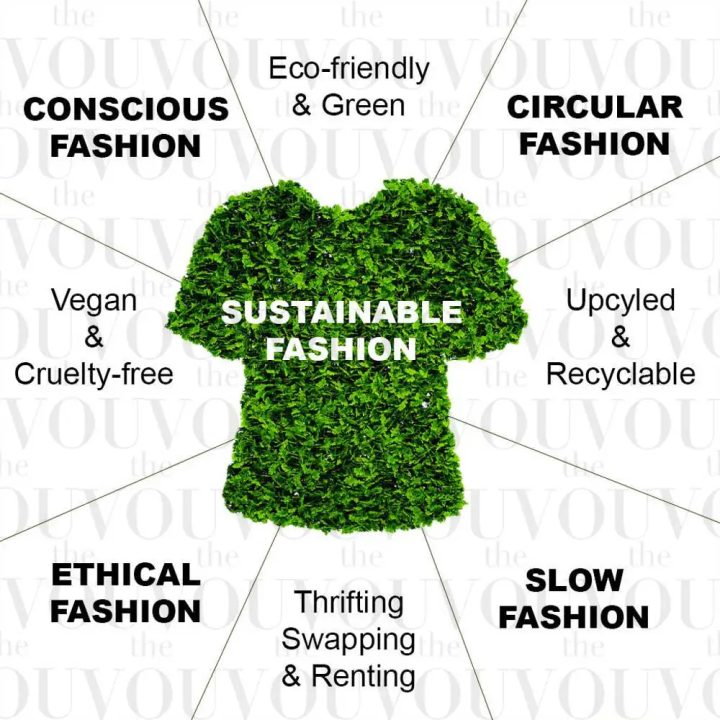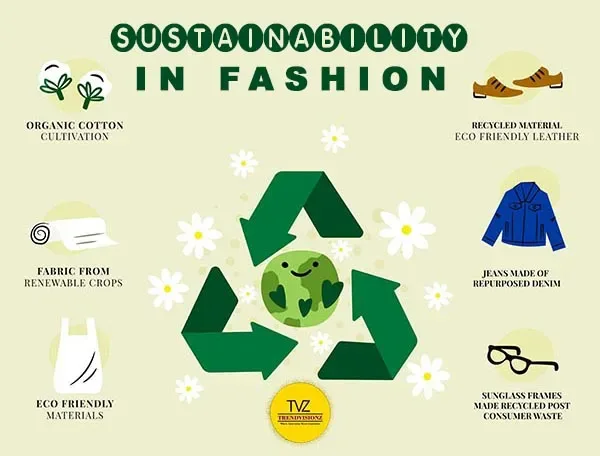Cape Town Sustainable Fashion Designers Leading the Eco-friendly Movement
Cape Town Sustainable Fashion Designers Leading the Eco-friendly Movement
Blog Article
Keep Ahead of the Contour by Discovering Ingenious Fashion Fads
In an industry as vibrant as fashion, remaining ahead includes even more than simply complying with existing fads-- it requires an expedition of innovation. Smart fabrics, for example, are transforming garments right into practical masterpieces, while 3D printing is changing design procedures with its customizable, waste-reducing capabilities. As sustainability comes to be a keystone, technologies like green products and circular fashion methods are improving ecological obligation - Cape Town Sustainable Fashion. Furthermore, the merging of innovation and style advertises a new era of customer involvement. How, after that, can these emerging trends redefine the future of style, and what implications do they hold for brand names seeking to thrive in this advancing landscape?

Accepting Smart Textiles
Over the last few years, the garment industry has seen a transformative shift with the integration of wise fabrics, an advanced advancement that blends innovation with textile. This development stands for not just a fusion of appearances and performance however likewise a significant leap in the direction of sustainability and personalization in style. Smart fabrics, additionally referred to as e-textiles, embed advanced electronics such as sensing units and conductive strings within the fabric, enabling garments to communicate with the setting or the wearer.
These fabrics are made to monitor physiological criteria, such as heart rate or body temperature level, offering real-time health analytics. Past wellness applications, smart fabrics are also being made use of for adaptive apparel, which can transform shade or pattern in response to environmental stimuli, therefore supplying a vibrant style experience.
Furthermore, the development of energy-harvesting textiles that produce power from movement or sunshine is leading the way for self-dependent wearable modern technology. This advancement is attracting ecologically aware customers and developers intending to reduce the environmental impact of fashion. As r & d in this field breakthrough, smart fabrics are expected to end up being increasingly prevalent, improving the landscape of contemporary fashion with their multifunctional abilities.
The Surge of 3D Printing
Transforming the manufacturing landscape, 3D printing has become a game-changer in the style market. This cutting-edge technology has actually allowed designers to press the borders of creativity, generating complex and personalized garments that were formerly inconceivable. By leveraging electronic style and additive manufacturing, 3D printing facilitates the production of complicated geometries and patterns, enabling designers to try out brand-new structures and frameworks.
A noteworthy benefit of 3D printing in vogue is its capacity to generate on-demand, lessening waste and lowering stock requirements. This performance not just optimizes manufacturing processes however additionally permits for rapid prototyping, enabling developers to bring their visions to life in a shorter duration. In addition, 3D printing supports modification to a degree unparalleled by traditional techniques, using unique styles and individualized fits customized to specific consumer choices.
The rise of 3D printing has actually additionally equalized fashion, making it easily accessible to emerging developers that can currently fabricate premium items without considerable financial investment in typical production framework. As technology remains to advancement, the apparel industry is poised to harness the complete potential of 3D printing, discovering new products and strategies that will unquestionably redefine exactly how fashion is developed and created.
Lasting Fashion Innovations
As the apparel industry grapples with journalism need for ecological obligation, lasting fashion innovations have actually arised at the center of transformative adjustment. The expanding recognition of ecological influence has actually sustained a shift in the direction of more eco-conscious methods and materials. Brands and developers are now prioritizing sustainability, including methods that decrease waste and reduce carbon footprints.
One considerable development is the increase of here circular style, which highlights recycling and upcycling to extend the lifecycle of garments. This method not only minimizes waste however also encourages consumers to adopt an extra mindful approach to garments usage.
One more breakthrough hinges on the fostering of innovative dyeing strategies that use waterless processes or all-natural dyes, thus decreasing the large quantities of water and chemicals generally made use of in textile dyeing. Additionally, innovations in biotechnology have led to the creation of lab-grown natural leather and textiles, offering eco friendly and cruelty-free alternatives to traditional products. Via these pioneering initiatives, the fashion business is making purposeful strides towards a much more lasting future.

Tech-Integrated Clothing
Tech-integrated garments stands for a groundbreaking blend of fashion and innovation, reshaping exactly how individuals connect with their garments. This innovative domain is noted by the addition of clever textiles and embedded electronic parts, improving both performance and aesthetic allure. From health and fitness trackers embedded in sports apparel to warmed coats regulated by means of smartphone applications, tech-integrated garments offers customers unmatched benefit and adaptability.
Introducing brands are driving this fad, concentrating on creating garments that respond to environmental stimuli or individual commands. For example, some garments can change shade or pattern in response to temperature shifts, while others include biometric sensors to monitor wellness metrics like heart rate or stress degrees. The seamless assimilation of modern technology right into fabrics additionally reaches environmental sustainability, with initiatives to develop self-cleaning materials or garments that get used to weather conditions, therefore decreasing the need for multiple layers.
In addition, the arrival of wearable innovation is not simply restricted to garments but reaches accessories like watches and eyewear, more expanding the extent of tech-integrated style. As the sector remains to innovate, the potential for personalization and customization in garments grows, providing consumers special, tech-enhanced fashion experiences that satisfy their specific needs and choices.
Future of Virtual Style
In the last few years, the future of digital style has arised as a transformative pressure within the market, leveraging innovations in electronic modern technology to redefine just how style is developed, experienced, and taken in. By integrating augmented truth (AR), visit our website online fact (VR), and 3D design tools, developers can currently craft immersive and interactive experiences that transcend visit the site conventional fashion limits. Digital style permits the development of garments that exist only in electronic atmospheres, using limitless possibilities for technology without the restrictions of physical manufacturing.
This electronic change not just offers opportunities for innovative expression yet also addresses sustainability worries inherent in typical fashion techniques. Cape Town Sustainable Fashion. By eliminating the requirement for physical sources, online fashion reduces waste and lessens carbon footprints. Additionally, the surge of virtual style lines up with the raising customer demand for one-of-a-kind and tailored experiences, as virtual garments can be tailored and customized to individual preferences effortlessly

Conclusion
The style industry's future lies in the combination of sustainable practices and ingenious modern technologies. Virtual fashion is positioned to redefine consumer interactions.
In current years, the style sector has observed a transformative shift with the integration of smart fabrics, a sophisticated development that mixes technology with fabric.As the fashion industry grapples with the pushing need for ecological responsibility, lasting fashion developments have actually emerged at the center of transformative modification.In recent years, the future of virtual style has arised as a transformative force within the market, leveraging advancements in electronic modern technology to redefine exactly how style is created, experienced, and taken in. The surge of digital style lines up with the increasing consumer demand for special and individualized experiences, as online garments can be customized and tailored to specific preferences with convenience.
The fashion industry's future lies in the integration of sustainable practices and cutting-edge technologies.
Report this page